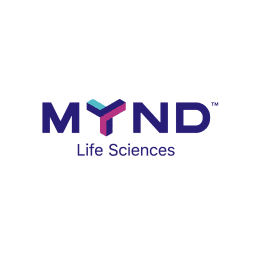‘Growth hacking’
Early on in the shroom boom critics had one major pain point – legalization is too far away.
I remember the stiffs at the Cannacord conference a couple of years back laughing at the idea of a psychedelics sector. And a certain subset of the mining dinosaurs laughed it off like they laughed off cannabis back around 2016.
Critics are right that mainstream recreational psychedelic use is in fact far away, but there are still a number of ways a psychedelics company can create value long before that event happens. And with so much hype in the sector, why not take a shot?
For early revenue generation, some companies have chosen to sell legal functional mushroom supplements. Others have either opened or partnered with clinics that provide their patients with an almost illegal drug that has nevertheless been approved by the FDA for a number of mental health issues.
An NCE (new chemical entity) is used to describe a newly developed drug compound, as opposed to the re-use of an existing drug for a different disease, re-formulation of an existing drug, or a novel combination of existing drugs. These are sometimes referred to as ‘novel compounds’.
One example in the psychedelics sector is a derivative of ketamine called esketamine that companies like Braxia (BRAX.C), Novamind (NM.C), and Field Trip (FTRP.C) are using in their ‘ketamine clinics’.
Companies like Cybin (CYBN.NE), Compass Pathways (CMPS.Q) and Mindset Pharma (MSET.C) are working on developing something similar with psilocybin. Whoever wins that race will be rewarded handomsly.
https://equity.guru/2021/05/14/champignon-brands-rebrands-as-braxia-scientific-brax-c-picks-up-4th-ketamine-clinic/
Revenue & esketamine
Esketamine is the S-enantiomer of ketamine, which is more potent at the N-methyl-D-aspartate (NMDA) glutamate receptor.
Part of the excitement about ketamine and esketamine is that this approach has the potential to improve mood and other depressive symptoms on a much shorter time scale than classic antidepressants, such as selective serotonin reuptake inhibitors. In the early studies of ketamine, a substantial portion of patients would experience dramatic improvement just 4 hours after dosing.
The main service people use ketamine clinics for is ketamine infusion therapy. The therapy can cost anywhere from $1,600 CAD to $6,000 CAD for a full series of ketamine treatments. Ketamine infusion for depression usually costs $400 to $800 per session, and most ketamine clinics perform a series of 6 sessions over 2 to 3 weeks. Some providers offer 4 treatments over 1 to 2 weeks. Most ketamine providers request an upfront payment for a complete set of 4 to 6 infusions, some offering discounts or package deals.
While some patients may need several treatments before effects are noticeable, the possibility of helping patients experience significant improvement after just one treatment-as seen in the following clinical vignette-is an important advancement over traditional antidepressants. Some experts question whether the effects of esketamine are as rapid as those of ketamine; nonetheless, these treatments provide a distinct mechanism of action and are an improvement upon existing therapies.
https://equity.guru/2021/03/17/ketamine-clinics-proving-to-be-significant-revenue-generators-for-early-stage-psychedelics-companies/
But it’s not all about looking for loopholes or workarounds, companies believe they can actually improve these ancient drugs through scientific innovation. Cybin is working on cutting out the waiting time before a psilocybin trip through an oral delivery system that hits the bloodstream almost immediately. Clinical trials also require companies to use high-grade synthetic psilocybin for dosing purposes.
Structurally, think of psilocybin like THC or CBD, it’s only one compound. Synthetic production means a purer product with fewer variables.
The FDA
A company’s goal when developing an NCE is to first get it approved the FDA before mass-scale production. Before approval, costly clinical trials need to be done. But, companies don’t need to go through this process if they have no interest in patenting their own IP. Just using esketamine and skipping clinical trials could potentially save a lot of money, money that could be redirected elsewhere.
Getting FDA approval also doesn’t really happen all that often either. They are rather strict when it comes to the formulation of new drugs.
Approximately 50% of all new drugs approved by the FDA in 2018 were initially developed by companies other than those that received the approval. More products today are acquired or in-licensed rather than developed in-house from the discovery phase. Global spending on M&A and licensing activities in the first half of 2019 reached nearly $140 billion — exceeding the estimated 2019 R&D spending by more than 60%.
https://equity.guru/2021/04/26/cybin-cybn-ne-to-target-alcoholism-in-their-cyb003-clinical-studies/
A notable increase in the number of drug approvals per year was also observed between 2000 and 2018. An average of 23 NCEs were approved each year from 2000 to 2010, but that number jumped to 35 in 2011 and has been increasing ever since, reaching 59 in 2018.
NCE’s have helped psychedelics companies post significant early revenue while also providing a much-needed service, especially in pandemic times. I expect to see more of a shift towards more companies implementing this into their business plan. Braxia, formerly Champignon Brands started out as a mushroom nootropics deal and over time pivoted to ketamine clinics.
Another upside to the clinic model is gathering patient data. Founders of Field Trip, who are planning on building the largest network of ketamine clinics in North America over the next couple of years sold their cannabis clinic company to Aurora (ACB.Q) in 2016. The data that these clinics are gathering will be key on building long-term customer relationships, and for lead generation when finding similar people who may want to go for treatment.
This gives companies the opportunity to use the time before legalization to build a customer database. The clinic model allows companies to use time on their side. Once legalization happens more power will likely be given to the government, and less to the companies, especially in Canada. This is kind of a perfect window for these companies to get off the ground running.









